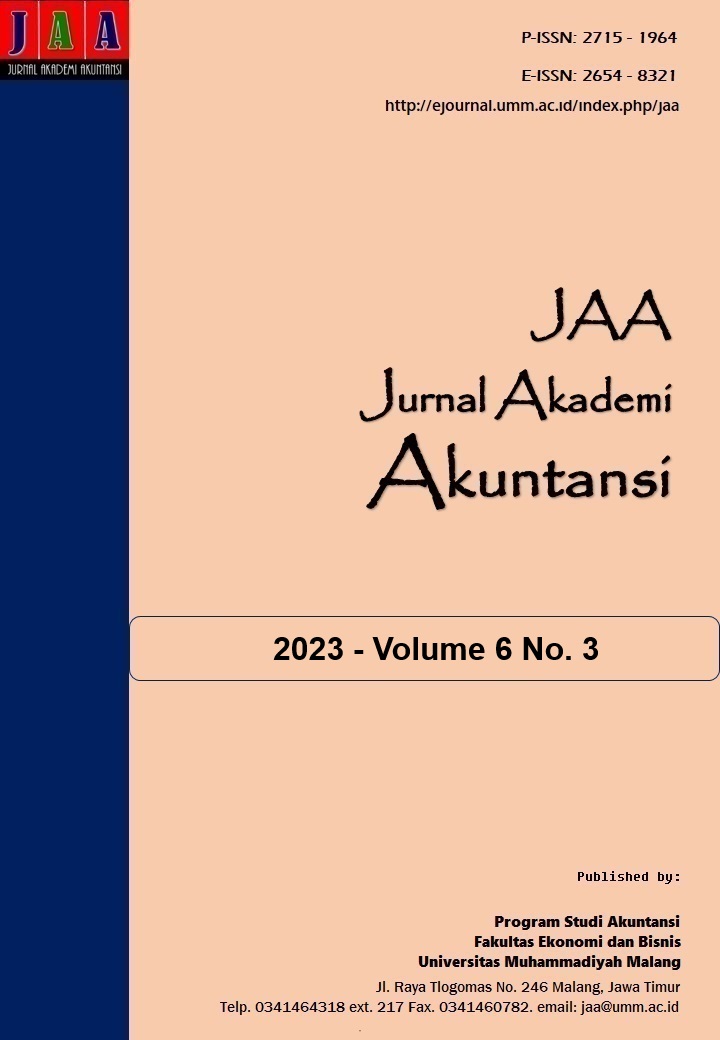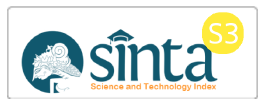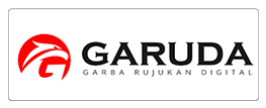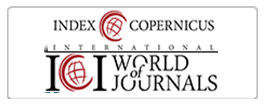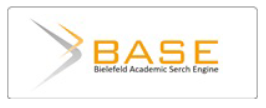Intensi Melakukan Tindakan Plagiasi oleh Mahasiswa Akuntansi: Dampak Perkembangan Teknologi dan Unfair Competition
DOI:
https://doi.org/10.22219/jaa.v6i3.26239Keywords:
Academic Fraud, Plagiarism, Technological Development, Unfair CompetitionAbstract
Purpose: This study examines how technological development and unfair competition affect students' motivations to plagiarize.
Methodology/approach: This study employs a quantitative methodology and a survey as its primary research tool. In order to gather information for this study, questionnaires were also used. 257 accounting students, including those pursuing diploma, bachelor's, master's, and doctoral degrees, who were enrolled in 16 universities in the Province of DIY made up the entire sample size for this study.
Findings: Technological development and unfair competition have both been shown to have a positive impact on students' intentions to plagiarize.
Practical and Theoretical contribution/Originality: The findings of this study can be used as a reference option for policy makers in various types of educational institutions, especially in tertiary institutions in order to develop effective anti-plagiarism policies.
Research Limitation: This study was not carried out comprehensively to all universities in the Province of DIY that have Accounting Study Programs. The 257 respondents in this study only came from 16 universities. Considering that there are quite a number of universities in DIY that have Accounting Study Programs, it is hoped that future researchers will be able to broaden the range of respondents' origins.
Downloads
References
Agustianti, R., Pandriadi, Nussifera, L., Wahyudi, Angelianawati, L., Meliana, I., Sidik, E. A., Nurlaila, Q., Simarmata, N., Himawan, I. S., Pawan, F. I., Andriani, A. D., & Hardika, I. R. (2022). Metode Penelitian Kuantitatif & Kualitatif (N. P. Gatriyani & N. Mayasari (eds.)). CV Tohar Media.
Ahmed, K. (2018). Student Perceptions of Academic Dishonesty in A Private Middle Eastern University. Higher Learning Research Communications, 8(1), 16–29.
BBC Indonesia. (2017). Dugaan Plagiarisme di UNJ: “Pelaku Ingin Naik Pangkat dan dipandang Tinggi.” BBC Indonesia. https://www.bbc.com/indonesia/indonesia-41161834
Billy, B., Andrianus, A., Yuliati, R., & Adelina, Y. E. (2019). Kecurangan Akademik pada Mahasiswa Akuntansi Berdasarkan Perpektif Fraud Diamon. Jurnal Ekonomi, Keuangan, Perbankan, Dan Akuntansi, 11(2), 157–178. https://doi.org/10.35313/ekspansi.v11i2.1346
Burke, D. D., & Sanney, K. J. (2018). Applying The Fraud Triangle to Higher Education: Ethical Implications. Journal of Legal Studies Education, 35(1), 5–43. https://doi.org/10.1111/jlse.12068
Chin, W. W. (1998). The Partial Least Squares Approach to Structural Equation Modeling. In G. A. Marcoulides (Ed.), Modern Method for Business Research (pp. 295–336). Lawrence Erlbaum Associates Inc.
CNN Indonesia. (2022). Tanda Air, Cara Bedakan Tulisan ChatGPT dan Manusia demi Cegah Plagiat. CNN Indonesia. https://www.cnnindonesia.com/teknologi/20221215134140-199-887804/tanda-air-cara-bedakan-tulisan-chatgpt-dan-manusia-demi-cegah-plagiat
Cressey, D. (1953). Other People’s Money: A Study in the Social Psychology of Embezzlement. FreePress.
Davies, L. J. P., & Howard, R. M. (2016). Plagiarism and The Internet: Fears, Facts, and Pedagogie. In Handbook of Academic Integrity. Springer Singapore.
Dewi, A. K., Puspaningsih, A., & Hudayati, A. (2022). The Influence of Islamic Value and Fraud Diamond Factors on Academic Fraud: Empiricaly Study on Islamic University. Al-Uqud: Journal of Islamic Economics, 6(2), 259–274. https://doi.org/10.26740/aluqud.v6n2.p259-274
Elshafei, H. A., & Jahangir, T. M. (2020). Factors Affecting Plagiarism Among Students at Jazan University. Bulletin of the National Research Center, 44(71), 1–5. https://doi.org/10.1186/s42269-020-00313-z
Ferguson, S. L., Flostrand, A., Lam, J., & Leyland, P. (2022). Caught in A Vicious Cycle? Student Perceptions of Academic Dishonesty in the Business Classroom. The International Journal of Management Education, 20(3), 1–15. https://doi.org/10.1016/j.ijme.2022.100677
Fornell, C., & Larcker, D. F. (1981). Evaluating Structural Equation Models with Unobservable Variables and Measurement Error. Journal of Marketing Research, 18(1), 39–50. https://doi.org/10.1177/002224378101800104
Fransiska, I. S., & Utami, H. (2019). Perilaku Kecurangan Akademik Mahasiswa: Perspektif Fraud Diamond Theory. Jurnal Akuntansi Aktual, 6(2), 316–323. https://doi.org/ 10.17977/um004v6i22019p316
Hair Jr, J. F., Sarstedt, M., Hopkins, L., & Kuppelwieser, V. G. (2014). Partial Least Squares Structural Equation Modelling (PLS-SEM): An Emerging Tool in Business Research. European Business Review, 26(2), 106–121. https://doi.org/10.1108/EBR-10-2013-0128
Herawaty, N., & Masbirorotni. (2022). The Impact of the Fraud Diamond Dimension, Religiosity, and Misuse of Information Technology on Student Academic Dishonesty. Indonesian Research Journal in Education, 6(2), 362–375. https://doi.org/10.22437/irje.v6i2.20707
Ibegbulam, I. J., & Eze, J. U. (2015). Knowledge, Perception and Attitude of Nigerian Students to Plagiarism: A Case Study. International Federation of Library Associations and Institutions (IFLA) Journal, 41(2), 120–128. https://doi.org/10.1177/0340035215580278
Institut Teknogi Bandung. (2010). Press Release Kasus Plagiarisme Mochammad Zuliansyah. Institut Teknogi Bandung. https://www.itb.ac.id/news/read/2811/home/press-release-kasus-plagiarisme-mochammad-zuliansyah
Khathayut, P., Walker-Gelaves, C., & Humle, S. (2022). Using The Theory of Planned Behaviour to Understand Thai Students’ Conceptions of Plagiarism within Their Undergraduate Programmes in Higher Education. Study in Higher Education, 47(2), 294–411. https://doi.org/10.1080/03075079.2020.1750584
King, M. R. (2023). A Conversation on Artificial Intelligence, Chatbots, and Plagiarism in Higher Education. Cellular and Molecular Bioengineering, 16(1), 1–2. https://doi.org/10.1007/s12195-022-00754-8
Kompas. (2021). Kampus Ini Tak Luluskan Mahasiswa Plagiat Tugas, Bangun Integritas Akademik. Kompas. https://www.kompas.com/edu/read/2021/09/22/163804371/kampus-ini-tak-luluskan-mahasiswa-plagiat-tugas-bangun-integritas-akademik?page=all
Latan, H., & Ghozali, I. (2012). Partial Least Squares Konsep, Teknik, dan Aplikasi Menggunakan Program SmartPLS 2.0 M3 (P. P. Harto (ed.)). Badan Penerbit Universitas Dipenogoro.
Mehmetoglu, M. (2012). Partial Least Squares Approach to Structural Equation Modeling for Tourism Research. Advances in Hospitality and Leisure, Emerald Group Publishing Limited, Bingley, pp. 43-61. https://doi.org/10.1108/S1745-3542(2012)0000008007
Melati, I. N., Wilopo, R., & Hapsari, I. (2018). Analysis of the Effect of Fraud Triangle Dimensions, Self- Efficacy, and Religiosity on Academic Fraud in Accounting Students. The Indonesian Accounting Review, 8(2), 189–203. http://dx.doi.org/10.14414/tiar.v8i2.1536
Meo, S. A., & Talha, M. (2019). Turnitin: Is It A Text Matching or Plagiarism Detection Tool? Saudi Journal of Anesthesia, 13(1), 48–51. https://doi.org/ 10.4103/sja.SJA_772_18
News Okezone. (2014). Sederet Kasus Plagiarisme di Kampus. News Okezone. https://news.okezone.com/read/2014/02/25/373/946214/sederet-kasus-plagiarisme-di-kampus
Peytcheva-Forsyth, R., Aleksieva, L., & Yovkova, B. (2018). The Impact of Technology on Cheating and Plagiarism in The Assessment – The Teachers’ and Students’ Perspectives. Proceedings of the 44th International Conference on Applications of Mathematics in Engineering and Economics. https://doi.org/10.1063/1.5082055
Prasetyo, I., & Handayani, N. S. (2019). Prokrastinasi Akademik dan Kecurangan Akademik pada Mahasiswa yang Kuliah Sambil Bekerja. Jurnal Psikologi, 12(1), 22–30. http://dx.doi.org/10.35760/psi.2019.v12i1.1913
Santoso, A., & Cahaya, F. R. (2018). Factors Influencing Plagiarism by Accounting Lectures. Accounting Education, 28(4), 401–425. https://doi.org/10.1080/09639284.2018.1523736
Sayed, N., & Lento, C. (2016). The Impact of Technology on Academic Dishonesty: Perspectives From Accounting Faculty. The Accounting Educators’ Journal, 65–87. https://dx.doi.org/10.2139/ssrn.2655615
Sekaran, U. (2003). Research Methods for Business: A Skill Building Approach (4th ed.). John Wiley & Sons.
Serhan, O. Al, Houjeir, R., & Aldhaheri, M. (2022). Academic Dishonesty and the Fraud Diamond: A Study on Attitudes of UAE Undergraduate Business Students During the COVID-19 Pandemic. International Journal of Learning, Teaching, and Educational Research, 21(10), 88–108. https://doi.org/10.26803/ijlter.21.10.5
Tempo. (2023a). Menulis Karya Ilmiah Pakai Platform AI ChatGPT Berpotensi Kena Plagiarisme. Tempo. https://tekno.tempo.co/read/1704845/menulis-karya-ilmiah-pakai-platform-ai-chatgpt-berpotensi-kena-plagiarisme
Tempo. (2023b). Turnitin Rilis Teknologi AI Deteksi Tulisan ChatGPT di Kalangan Siswa. Tempo. https://tekno.tempo.co/read/1712042/turnitin-rilis-teknologi-ai-deteksi-tulisan-chatgpt-di-kalangan-siswa
VOA News. (2018). Some Students Not Well-Schooled About Plagiarism. Voa News. https://www.voanews.com/a/international-students-who-plagiarize-may-not-understand-the-issue/4506202.html
Wolfe, D., & Hermanson, D. R. (2004). The Fraud Diamond: Considering Four Elements of Fraud. The CPA Journal, 74(12), 38–42.
Downloads
Published
Issue
Section
License
Copyright (c) 2023 Briyan Efflin Syahputra, Anggit Esti Irawati, Nur Ariefin Addinpujoartanto

This work is licensed under a Creative Commons Attribution-NonCommercial-ShareAlike 4.0 International License.
Jurnal Akademi Akuntansi is licensed under a Creative Commons Attribution-NonCommercial-ShareAlike 4.0 International License.
Authors who publish with this journal agree to the following terms:
- Authors retain copyright and grant the journal right of first publication with the work simultaneously licensed under a Creative Commons Attribution-NonCommercial-ShareAlike 4.0 International License that allows others to share the work with an acknowledgment of the work's authorship and initial publication in this journal.
- Authors are able to enter into separate, additional contractual arrangements for the non-exclusive distribution of the journal's published version of the work (e.g., post it to an institutional repository or publish it in a book), with an acknowledgment of its initial publication in this journal.
- Authors are permitted and encouraged to post their work online (e.g., in institutional repositories or on their website) prior to and during the submission process, as it can lead to productive exchanges, as well as earlier and greater citation of published work (See The Effect of Open Access).
Jurnal Akademi Akuntansi dilisensikan di bawah lisensi Creative Commons Attribution-NonCommercial-ShareAlike 4.0 International.
Penulis yang menerbitkan artikel di jurnal ini menyetujui ketentuan berikut:
- Penulis mempertahankan hak cipta dan memberikan hak jurnal atas publikasi pertama dengan karya yang secara serentak dilisensikan di bawah Lisensi Pengaitan Creative Commons yang memungkinkan orang lain untuk berbagi karya dengan pengakuan atas karya penulis dan publikasi awal dalam jurnal ini.
- Penulis dapat masuk ke dalam pengaturan kontrak tambahan yang terpisah untuk distribusi non-eksklusif versi karya jurnal yang diterbitkan (misalnya, mempostingnya ke repositori institusional atau mempublikasikannya dalam sebuah buku), dengan pengakuan publikasi awalnya di jurnal ini.
- Penulis diizinkan dan didorong untuk memposting pekerjaan mereka secara online (misalnya, di repositori institusional atau di situs web mereka) sebelum dan selama proses pengajuan, karena dapat mengarah pada pertukaran produktif, serta kutipan pekerjaan sebelumnya dan yang lebih besar (Lihat Pengaruh Akses Terbuka).

